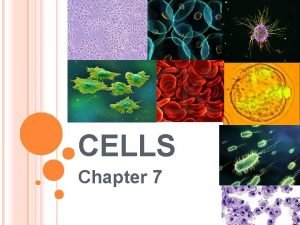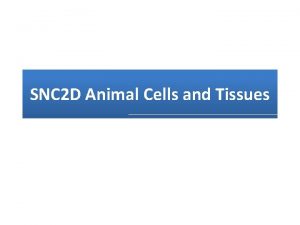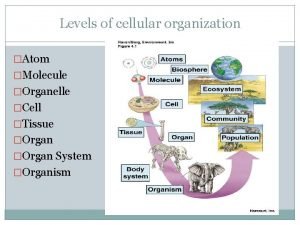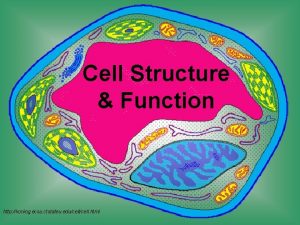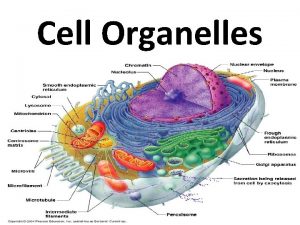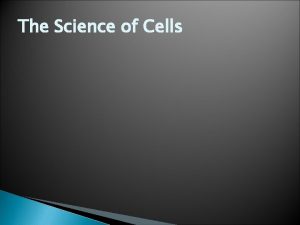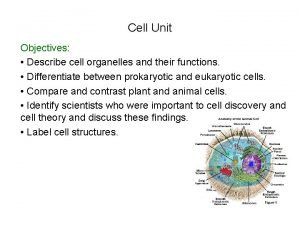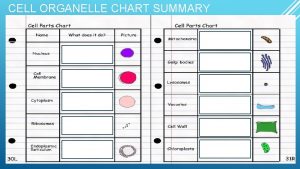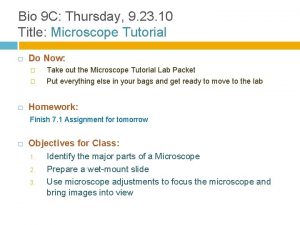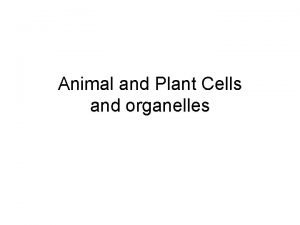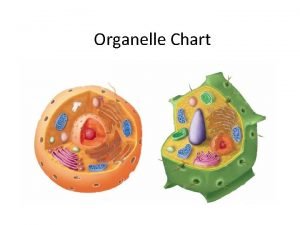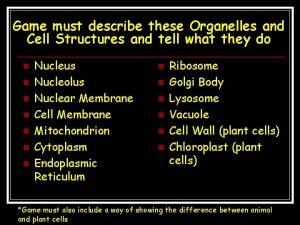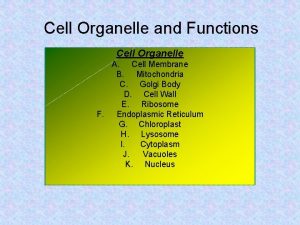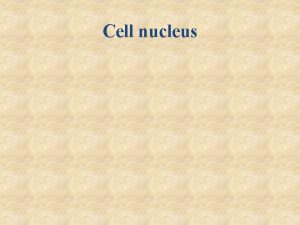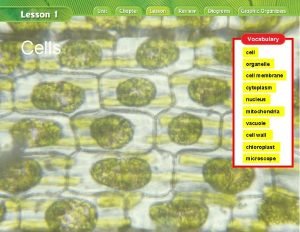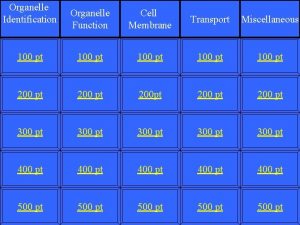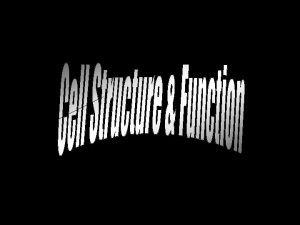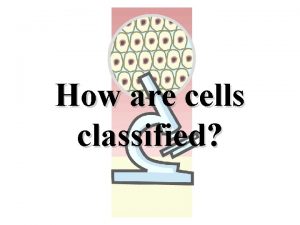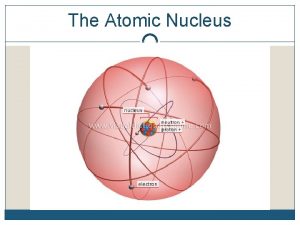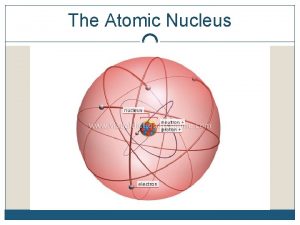NUCLEUS Nucleus is major cell organelle It houses




















- Slides: 20

NUCLEUS § Nucleus is major cell organelle. § It houses all the cell’s DNA. § It was discovered by Robert brown in 1833. § Nuclear material bounded by memrane---- Eukaryotic. § Not bounded---- Prokaryotic. § The chromatin material suspended in the cytoplasm is called as nucleoid. Robert Brown

Occurrence: § Found in nearly all eukaryotic cells of plants & animals. § Mammalian RBcs, Sieve tubes of higher plants do not possesses nucleus. § In such cells it is present in immature condition. Position: §. Usually it is present in the center of the cell. § Position changes as per metabolic state of the cell. § Glandular cells has basal position nucleus.

Number: § § § § Generally a cell contains single nucleus. Number of nucleus may vary cell to cell. Cells are differentiated in to … 1. Anucleate: without nucleus. 2. Mononucleate: with single nucleus. 3. Binucleate: having two nuclei. 4. Polynucleate: cells with many nuclei. e. g. polynucleate cells animal of animal is called as syncytium (epidermis of Ascaris) § Polynuceate cells of plants (ceonocytic) e. g. Vaucheria.

Shape: § Shape of the nucleus is different in different cells. § It is Spherical § Ovoid § Rounded § Bilobed § Multilobed § Cylindrical § Moniform (like string of beads) § Horse-shoe shaped § Branched.

Size: § Size of the nucleus also variable in many cells. § It is about 3µm in diameter. § Actually size depends on no of chromosomes present. § Haploid cells contain small sizes than the diploid & polyploid cells. § Thus, the size of nucleus depends on volume of cytoplasm. § Generally it occupies 10% of the total cell volume.

Ultrastructure of Nucleus § The interphase nucleus composed of following four principal components: Ø 1. Nucear envelope Ø 2. Nuclear Sap Ø 3. Chromatin material Ø 4. Nucleolus

Nuclear envelope § A membrane bounded the nucleoplasm. § It is also called as karyotheca. § It is composed of outer & inner unit membrane. § The outer membrane is rough due to the presence of Ribosomes. § It is directly associated with E. R. & Ribosomes. § Proteins synthesized on ribosomes. § Both unit membranes seperated by perinuclear space which is about 80 -100 A 0.

§ Lipid droplets, antibodies and crystalline deposits are found in perinuclear space. § The inner membrane is associated with proteinaceous mass called as fibrous lamina. § Small openings are present at different intervals to nuclear membrane is called as nuclear pores. § These pores shows the presence of ring (circular) like structure called as annulus. § The annulus extends in to cytoplasm & nucleoplasm. § Annulus transports the material from nucleoplasm to cytoplasm & vice-versa.

Chemical composition of Nuclear Envelope § Nuclear membrane composed of chemically… § Proteins (59 -75% ) in different cells. § Lipids (17 -35 %) § Carbohydrates in low concentrations. § 20 different types of proteins. § Many enzymes. § DNA & RNA § NE shows ATPase activity. § ATPase concentration is found to be high at Nucear pores.

Functions of Nuclear Envelope § Protective (genetic material is well protected). § Transport of materials. (active & passive). § Exchahnge through E. R. § Pinocytosis. § Macromolecules pass through Nuclear pores. § Provides attachment for structural elements of Cytoplasm & Nucleoplasm.


Nuclear Sap § The space between nucleoplasm and nuclear membrane is filled with a transparent semisolid, granular and acidophilic substance is known as nuclear sap or nucleoplasm. § It contains nucleolus and chromatin fibres. § It contains… § a). Nucleic acids- DNA & RNA. § b). Proteins- basic proteins & acidic proteins. § c). Enzymes- DNA polymerase & RNA polymerase. § d). Lipids- in small amount. § e). Minerals- Phosphorus, Potassium, Sodium, Calcium and Magnesium are present.

Chromatin Material § The nuceoplasm contains coiled, thread-like elongated structure, stained by basic dyes. § These threads are k/as chromatin fibres and are observed only in the interphase nucleus. § During cell division, they become short & thick and are k/as chromosomes. § Two types of chromatin materials have been recognized… § (a). HETEROCHROMATIN: § The darkly stained condensed region of the chromatin is heterochromatin. § The condensed portion of nucleus is k/as chromocenters or karyosomes. § The heterochromatin occurs around the nucleolus and at the periphery. § It contains small amount of DNA and large amount of RNA. § It is supposed to be metabolically and genetically inert.

§ (b). EUCHROMATIN: § The lightly stained and diffuse region of chromatin is k/as euchromatin. § It contains large amount of DNA. § It is metabolically active i. e. it is a site of RNA synthesis.

NUCLEOLUS § The nucleus contains a large, spherical and acidophilic dense granular structure k/as nucleolus. § It was first discovered by Fontana in 1781. § Nucleolus is absent from lower organism like bacteria, yeast, some algae, mammalian RBC, spermatozoa. In all other cells nucleolus is present. § Size of the nucleolus depends on the synthetic activity of cells. § Nucleoli are small in cells showing little protein synthesis. § Large cells where protein synthesis is going on actively as oocytes, neurons, secretory cells etc. § The number of nucleoli depends on no of sets of chromosomes. § A diploid cell contains two nucleoli and haploid with single nucleolus.

Ultrastructure of Nucleolus § The nucleolus is surrounded by thick covering called perinucleolar chromatin. § The perinucleolar chromatin projects into the nucleolus to form the intranucleolar chromatin. § The peri & intranucleolar chromatin are rich in DNA. § The DNA serves as a template for the synthesis of RNA. § The interior of the nucleolus is filled with a proteinous ground substance called matrix. § The matrix contains a number of fibrils and granules. § The nucleolus is composed of RNA, DNA, proteins and enzymes. § The enzymes are acid phosphatases, nuclease, phosphorylase.

Types of Nucleolus § Based on the distribution of granules nucleoli are classified in to… § 1). Homogenous nucleolus: § The granules are uniformly distributed throughout the nucleolus. § 2). Heterogenous nucleolus: § The granules are occurring in groups. § 3). Ring nucleolus: § The granules are arranged along the periphery of nucleolus in the form of ring.

Nucleolar organizer § It is constricted area of the chromosome where nucleolus is formed. § This area is also called as secondary constriction. § The chromosome containing the nucleolar organizer is called the nucleolar chromosome. Functions of Nucleolus 1. RNA Synthesis: Nucleolus is the active site of RNA Synthesis 2. Ribosomal subunit formation: 40 s & 60 s ribosomal subunits.


Functions of Nucleus Ø It is a store house of heredity material. Ø It controls heredity characteristics of an organism. Ø Protein Synthesis. Ø Cell division, growth & differentiation. Ø Site for transcription process for m. RNA production. Ø Exchange of DNA & RNA. Ø Nucleolus produces Ribosomes. Ø It regulates the integrity of gene and gene expression.
 Which organelle prepares proteins for specific jobs
Which organelle prepares proteins for specific jobs Cell organelle graphic organizer answer key
Cell organelle graphic organizer answer key Acceptance houses and discount houses
Acceptance houses and discount houses Wanted organelle poster nucleus
Wanted organelle poster nucleus Molecule organelle cell
Molecule organelle cell Atom molecule organelle
Atom molecule organelle Molecule organelle cell
Molecule organelle cell Cell organelle song
Cell organelle song Garbage collector of the cell
Garbage collector of the cell Hooke saw tiny openings in cork and named them
Hooke saw tiny openings in cork and named them Cell organelle webquest
Cell organelle webquest Cell organelle jeopardy
Cell organelle jeopardy What cell organelle is compared to a window screen
What cell organelle is compared to a window screen Cell organelle
Cell organelle Cell organelle
Cell organelle Cell organelle graphic organizer answer key
Cell organelle graphic organizer answer key Eukaryotic cell with labels
Eukaryotic cell with labels What organelle is like a storage container
What organelle is like a storage container Organelle function chart
Organelle function chart Organelle trail
Organelle trail Cell organelles game
Cell organelles game



